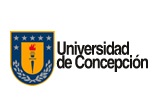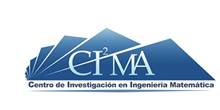Preprint 2025-13
Alonso J. Bustos, Sergio Caucao, Gabriel N. Gatica:
Mixed-primal and fully-mixed formulations for the convection-diffusion-reaction system based upon Brinkman--Forchheimer equations
Abstract:
We introduce and analyze new mixed formulations, within Banach spaces-based frameworks, for numerically solving the model given by the coupling of the Brinkman--Forchheimer equations with a convection-diffusion-reaction phenomenon. Specifically, for the former, we consider a pseudostress-velocity mixed formulation, whereas for the latter we analyze both primal and mixed approaches. In particular, for the mixed one the convection-diffusion-reaction part is reformulated by introducing the pseudodiffusion vector as an additional unknown, thus leading to a fully-mixed formulation of the coupling. On the other hand, in the mixed-primal setting, the Dirichlet boundary condition for the concentration is enforced through a suitable Lagrange multiplier. In contrast, this requirement is avoided with the fully-mixed approach, but an additional theoretical constraint on the data needs to be assumed. We establish the well-posedness of both formulations using a fixed-point strategy and prove the well-posedness of the uncoupled problems by relying on recently established solvability results for perturbed saddle-point problems in Banach spaces, together with the Banach--Ne{\v c}as--Babu{\v s}ka theorem and the Babu{\v s}ka--Brezzi theory. Additionally, we provide a discrete analysis for both approaches under specific hypotheses on arbitrary finite element spaces. For instance, for each integer $k \ge 0$, we consider tensor and vector Raviart--Thomas subspaces of order $k$ for the pseudostress and pseudodiffusion, respectively, along with piecewise polynomial subspaces of degree $\le k$ for the velocity and concentration. This choice yields stable Galerkin schemes for the fully-mixed approach, for which optimal theoretical convergence rates are achieved. Finally, we illustrate the theoretical results through several numerical examples, comparing both approaches and testing the associated data assumptions.


